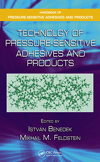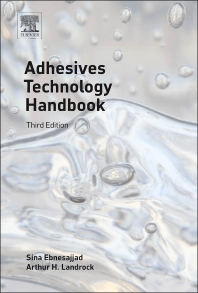DOW EPOXY: Epoxy Tougheners
Dow Epoxy has introduced FORTEGRATMEpoxy Tougheners, low-viscosity materials for use in amine-, DICY-, anhydride- and phenolic-cured epoxy systems.FORTEGRA Epoxy Tougheners are suitable for any applications where properties of epoxies (such as adhesion, corrosion and chemical resistance) are needed but greater mechanical performance is required. The FORTEGRA line is based on a specially designed, self-assembling block co-polymer that creates the particles needed for toughening the cured epoxy but does not result in big changes to other properties, such as viscosity, cure speed or chemical resistance.
FORTEGRA Epoxy Tougheners are available in four forms to make it easy for customers to incorporate into their formulations. FORTEGRA 100 is the Dow proprietary epoxy-toughening agent. Two of the grades - FORTEGRA 383-50 and FORTEGRA 383-5 - are blends of D.E.R.TM383 Liquid Epoxy Resin with respective weight percentages of 50 and 5 of the toughening material. The remaining grade, FORTEGRA 664-12, is a 12 weight percent blend of the toughening material in D.E.R. 664, a medium-molecular-weight solid epoxy resin used mainly in powder coatings.
For more information, visitwww.dowepoxy.com.
I&J FISNAR: Digital Fluid Dispenser
This company has announced the introduction of an economic RoHS compliant CE mark Digital Dispenser. The model SL101 continues with Fisnar’s policy of manufacturing high quality, state-of-the-art dispensing products at an affordable price.The SL101 is a self-teach Bench Top Dispenser with a bright LCD and 10 memory locations to automatically cycle 10 self-taught programs. Auto cycling is one of three operation modes available. The other two are Manual-Mode, which enables a dispense operation controlled by a foot-pedal, and Timed-Mode, which dispenses at a pre-set time.
Touch-sensitive controls program the SL101 with dispense periods from 0.01–9999 seconds. Systems are available in 110V and 220V versions. Air Input is 70–100 psi (5-7 bar). Dispense output air pressure can be programmed from 1–100 psi. An adjustable suck-back feature prevents post-dispense dripping of low-viscosity fluids and potential oozing of higher-viscosity creams.
Auto cycling operates by sequencing a self-taught cycle of events, including a dispense-time together with a “wait” or “pause” condition between the cycles. This feature enables the SL101 to be used as a stand-alone, semi-automated dispensing system. Alternatively, the SL101 can be controlled remotely or integrated with any I&J series robot dispensing from syringes or controlling pneumatically actuated I&J valves.
For more information, visitwww.ijfisnar.com.
MOYNO: Progressing Cavity Pump
This company offers the new Moyno® L-Frame Progressing Cavity Pump for dependable performance and maximum operating efficiency. These versatile pumps are ideal for handling clean, clear liquids as well as viscous, abrasive, solids-laden slurries and sludges in chemical, petrochemical, water and wastewater treatment, mining, food processing, pulp and paper, and general industrial applications.With a variety of models and an extensive range of materials of construction, Moyno L-Frame Pumps offer tremendous application versatility. Standard flange models feature a modular design with a simple pin-type universal joint for easy maintenance. Open-throat models are also available. All Moyno L-Frame Pumps are available with a variety of drive options, sealing configurations, motors and controls to address critical application requirements.
Additional L-Frame features include:
- Non-pulsating, metered flow
- Long life, even in abrasive applications
- Quiet, vibration-free operation
- Easy on-site maintenance
- Low product shear
- Viscosities over 1,000,000 cps
- Capacities to 450 gpm
- Pressures to 2,100 psi
- Handles entrained air and gases without vapor locking
CHARLES ROSS & SON CO.: Mixer
This company has introduced a new design option for its popular line of change can mixers, including the PowerMix, Double Planetary, VersaMix and Dual Shaft designs.The new tilting design allows automated discharge from a tilted mix can to a receptacle placed under the can on a bench. This feature simplifies the transfer of materials to secondary processes and eliminates the need for an operator to move the can from the mixing position. It also provides a completely accessible mix can for cleaning between batches.
The PowerMix combines a powerful planetary mixing blade revolving in concert with a separate high-speed dispersion blade. Both revolve on their own axes as well as on a common axis, and each can have its speed varied independent of the other. The PowerMix is used for high-viscosity vacuum mixing and dispersion, as well as the dispersion of minor liquid or powder ingredients into powder mixes.
The change can mixers are all available in a range of sizes and are offered with many optional features, including different materials of construction, vacuum and pressure designs, jackets to heat or cool, wall scrapers, sanitary construction, and more.
For more information, visitwww.mixers.com.








